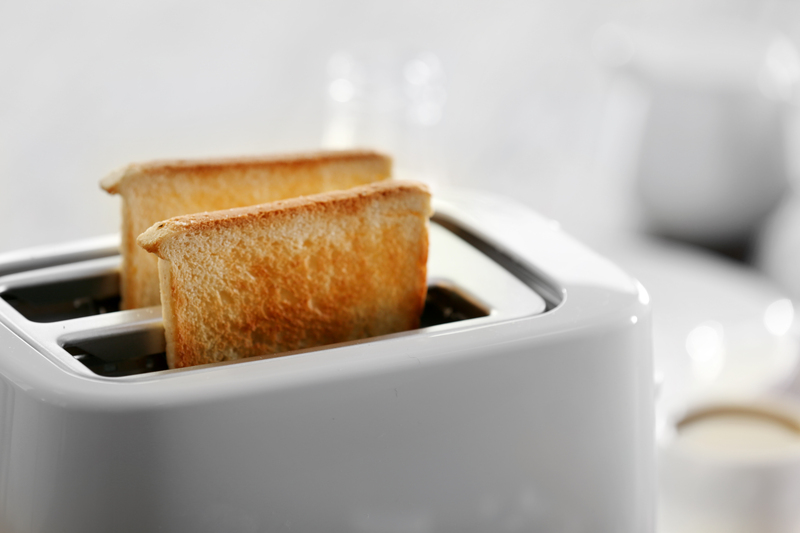Understanding Steam Cleaning for Leather Upholstery
Posted on 21/09/2025
Understanding Steam Cleaning for Leather Upholstery
Leather furniture exudes elegance, sophistication, and timeless style. Whether it's a plush sofa, a classic armchair, or luxury car seats, leather upholstery is an investment worth preserving. As stylish and durable as leather is, keeping it pristine requires regular cleaning -- and increasingly, steam cleaning for leather upholstery has emerged as a cutting-edge solution. In this comprehensive article, we'll explore everything you need to know about this advanced cleaning technique, its benefits, potential pitfalls, and best practices to ensure your precious leather items remain in top-notch condition.

What is Steam Cleaning and How Does it Work?
Before delving into the specifics of steam cleaning leather upholstery, it's essential to understand what steam cleaning actually entails. Steam cleaning is a process that utilizes high-temperature steam to loosen dirt, grime, germs, and stains from various surfaces. Steam cleaners heat water to produce vapor, which is then applied via a nozzle, brush, or cloth onto the surface that needs cleaning.
For most surfaces, especially fabrics and hard floors, steam is a safe and effective cleaning method. But when it comes to leather furniture, things get more nuanced. Leather steam cleaning must be approached with care, as excessive heat or moisture can damage the material's texture, finish, and color.
The Nature and Types of Leather Upholstery
Leather is a natural material derived from animal hide--most commonly cowhide. Understanding the nature of your leather is crucial because different types react to steam in different ways. The most common kinds of leather upholstery are:
- Aniline Leather: This is the most natural form, dyed with soluble dyes but without a protective coating. Aniline leather is soft and luxurious, but also highly absorbent and sensitive to water and stains.
- Protected/Pigmented Leather: Treated with a pigment layer and a protective topcoat, making it more durable and resistant to stains and moisture. This variety is commonly found in family homes and vehicles.
- Bi-cast Leather: A split leather with a layer of polyurethane applied to the surface for added protection and shine.
- Bonded Leather: Made from leftover hide pieces, bonded together with adhesives and covered with polyurethane. It's less durable and considered lower quality.
- Nubuck and Suede: These have a soft, velvety surface but are extremely porous, making them sensitive to liquid-based cleaning, including steam.
The leather's finish determines whether steam cleaning leather upholstery is safe and effective. Generally, protected or pigmented leather is best suited for steam cleaning, while aniline, nubuck, and suede should be cleaned with extreme caution -- or avoided altogether.
Benefits of Steam Cleaning Leather Upholstery
Why consider steam cleaning leather furniture instead of conventional cleaning methods? Let's explore the advantages:
- Deep Cleans Without Harsh Chemicals: Steam relies solely on water vapor, eliminating the need for potentially harsh chemical detergents that can strip leather of its natural oils.
- Kills Germs and Allergens: The high temperature of steam not only cleans the surface, but also sanitizes it -- destroying bacteria, viruses, dust mites, and other allergens deep within the leather's pores.
- Environmentally Friendly: Since steam cleaning for leather couches uses only water, it reduces chemical runoff and limits the environmental impact.
- Stain Removal: Steam can effectively loosen tough, set-in stains like ink, food spills, and body oils without aggressive scrubbing.
- Restores and Refreshes: Steam lifts embedded dirt out while revitalizing the leather's appearance, leaving it soft, supple, and fresh-smelling.
- Quick Drying: When done correctly, steam cleaning uses minimal moisture, which means leather upholstery dries faster than with traditional wet cleaning.
Risks and Drawbacks of Steam Cleaning Leather Furniture
While using steam cleaners for leather upholstery has clear advantages, there are some caveats to observe:
- Heat Sensitivity: Leather is sensitive to heat. Direct, prolonged exposure to high temperatures can cause fading, hardening, or even cracking.
- Water Damage: Too much moisture can lead to staining, mold, or warping. It's crucial not to saturate the leather.
- Finish Degradation: Some leathers, especially unfinished varieties, may lose their sheen or natural oils if not treated correctly post-cleaning.
- Loss of Softness: If steam cleaning is too aggressive or frequent, it may strip the natural oils, making leather brittle or rough.
Therefore, understanding how to steam clean leather upholstery properly is vital for protecting your investment.
How to Steam Clean Leather Upholstery: Step-by-Step Guide
Ready to try this innovative cleaning method? Here's a detailed walkthrough on how to steam clean leather upholstery safely at home:
1. Examine the Leather and Read Manufacturer's Instructions
- Identify the type of leather and check your furniture or car's cleaning tags.
- If it says "dry clean only" or "avoid water," do not use a steam cleaner.
- Test a hidden area first for any adverse reactions (like discoloration or stiffening).
2. Assemble Equipment and Supplies
- Steam cleaner with a soft brush or microfiber attachment.
- Vacuum with a soft brush head.
- Clean, soft microfiber towels.
- Leather conditioner if available.
3. Pre-Clean the Leather Surface
- Vacuum the upholstery to remove loose dust, dirt, crumbs, and debris.
- Wipe with a dry microfiber cloth to remove any lingering particles.
4. Set Up the Steam Cleaner
- Fill the water tank with distilled water (to prevent mineral buildup).
- Attach a microfiber cloth or soft brush suitable for delicate surfaces.
- Allow the steam cleaner to heat up fully for optimal vapor production.
5. Begin Steam Cleaning
- Set the steam pressure to low or medium. Avoid high heat and strong streams.
- Always hold the nozzle or brush a few inches away from the leather surface.
- Move in small, circular motions to lift out dirt without lingering in one spot.
- Do not soak the surface -- a light mist is sufficient.
6. Wipe Dry Immediately
- After a section is steamed, promptly wipe with a dry microfiber towel.
- This step is critical -- it prevents moisture from seeping in and reduces the risk of water spots.
7. Condition the Leather (Optional but Recommended)
- Once the leather is fully dry, apply a high-quality leather conditioner following the product's instructions.
- Conditioning replenishes natural oils, keeps leather supple, and restores its protective barrier.
Important Tip: Never use steam cleaning on suede or nubuck leather, and avoid cleaning any areas with visible cracks, peels, or damage.
Professional Steam Cleaning Leather Services
While DIY steam cleaning for leather sofas and car interiors is possible, many people opt for professional services for added peace of mind. Professional leather cleaning providers:
- Use commercial-grade steam cleaning equipment designed for delicate finishes.
- Have expertise in identifying the safest method for different leather types.
- Apply professional-grade conditioners and protectants afterwards.
- Often guarantee satisfaction and minimize the risk of accidental damage.
If your leather upholstery is particularly valuable, soiled, or you're unsure about the cleaning process, consulting a leather cleaning expert is a wise investment.
Common Mistakes to Avoid with Steam Cleaning Leather Upholstery
To ensure your furniture or car seats stay looking their best, avoid these typical steam cleaning mistakes:
- Overusing Steam: More steam does not mean cleaner results on leather. Always use the minimum amount needed.
- Direct Contact: Never touch the nozzle or brush directly to the leather; always keep a small distance.
- Skipping Conditioner: Leather needs to be rehydrated after cleaning for longevity and softness.
- Ignoring Spot Testing: Always test a hidden area before cleaning visible sections.
- Using Tap Water: Hard tap water can leave mineral stains; distilled water is best.
- Leaving Leather Wet: Immediate drying is necessary to prevent mold or damage.
FAQs: Steam Cleaning for Leather Upholstery
- Can all leather upholstery be steam cleaned?
No. Only certain types, mainly protected or top-coated leathers, are suitable for steam cleaning. Always check the manufacturer's guidelines. - Is steam cleaning safe for vintage leather?
Generally, vintage leather is more delicate and best cleaned by professionals with expertise in antique restoration. - How often should I steam clean my leather furniture?
Steam cleaning should be performed only when necessary -- usually every 6 to 12 months for normal households, less frequently for lightly-used pieces. - Does steam cleaning remove odor from leather?
Yes, steam can effectively neutralize odors from sweat, pets, and food, leaving upholstery fresh without fragrance residue. - Should I apply a protector after steam cleaning?
Applying a leather protector or conditioner is highly recommended after cleaning to restore the barrier against stains and wear.
Alternative Methods for Cleaning Leather Upholstery
If steam cleaning isn't suitable for your particular leather item, there are alternative approaches:
- Mild Soap and Water: Use a diluted solution of mild soap and distilled water with a soft cloth for general cleaning. Always test first and dry thoroughly.
- Leather-Specific Cleaners: Many manufacturers offer cleaners formulated specifically for leather that gently lift dirt and nourish the material.
- Dry Cleaning: For heavily soiled or delicate pieces, professional dry cleaning is advisable.
- Conditioning: Regular application of a high-quality leather conditioner will maintain softness and flexibility, reducing the need for deep cleaning.

Tips for Prolonging the Life of Leather Upholstery
- Keep out of direct sunlight to prevent fading and drying out.
- Avoid placing leather near heat sources like radiators, which can dry and crack the material.
- Clean spills immediately -- blot, don't rub, using a dry, soft cloth.
- Vacuum regularly to remove dust and prevent abrasion from debris.
- Condition every 3-6 months depending on use and climate.
Routine care, combined with the occasional steam cleaning session for leather upholstery, will keep your furniture or car seats in pristine condition for years to come.
Conclusion: Is Steam Cleaning Right for Your Leather Upholstery?
In summary, steam cleaning leather upholstery offers a powerful and eco-friendly method to renew, sanitize, and protect your valuable furniture or vehicle interiors. When performed correctly -- using the appropriate equipment, minimal moisture, and gentle techniques -- it can restore your leather's beauty without resorting to harsh chemicals.
However, as steam and leather are a delicate combination, always consult your manufacturer's guidelines, spot-test in hidden areas, and follow up with proper conditioning. For rare or antique leather, or when in doubt, seek a professional's expertise.
By incorporating steam cleaning judiciously into your maintenance routine, you'll enjoy the luxurious comfort and rich look of your leather upholstery for many years.
Further Reading
- How to Clean Leather Furniture: The Complete Guide
- Best Leather Conditioners for Long-Lasting Shine
- Professional vs. DIY Steam Cleaning: What You Need to Know
Knowledge is power -- now you have all the essential information to make an informed decision about steam cleaning your leather upholstery!



